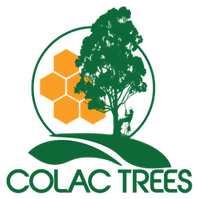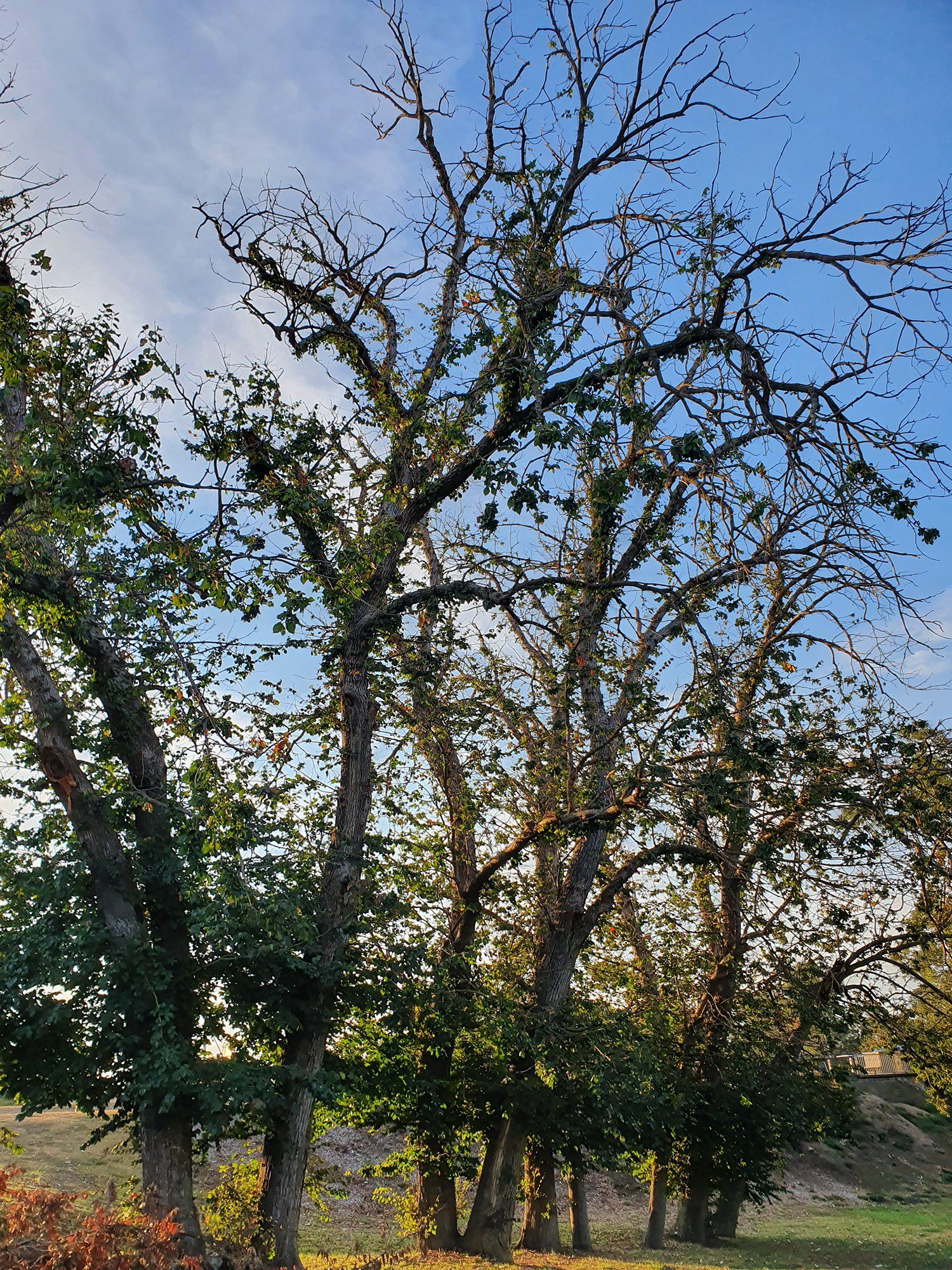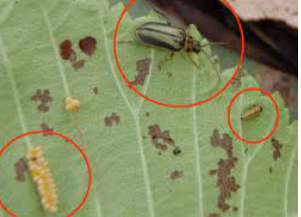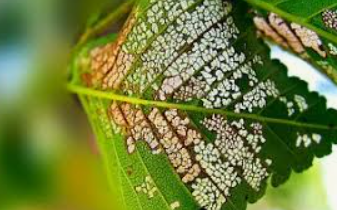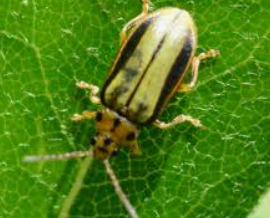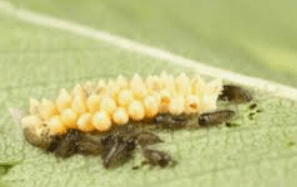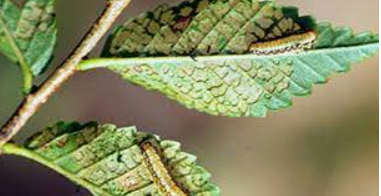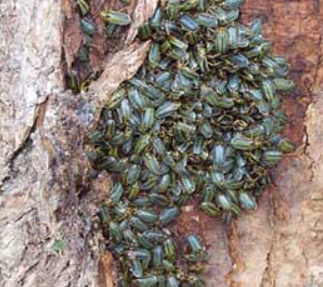STEM INJECTION for Colac, VIC
Stem Injection
Colac Trees offers stem injection services to eradicate parasites from your trees. This method involves injecting environmentally friendly insecticides or fungicides directly into the tree trunk. The treatment is then transported through the tree to the leaves, where it kills the pest.
The most common treatment we offer is Elm Leaf Beetle Treatment Programmes, which helps protect your beautiful trees. From the months of October through mid-March infestations can grow in your trees. We understand this can be quite distressing, especially if the tree is a major feature of your garden or even in parks & playgrounds. These beetles place holes in the leaves of your trees, which then develop into longer lace-type holes this is caused by the beetle's larvae. These larvae and cause a lot of damage in a very short time. If left untreated, they can defoliate your entire tree stripping it bare. At the first sign of beetle infestation, call Colac Trees to enquire about our range of stem injection treatments to protect your trees from parasites.
Some interesting facts worth knowing about the Elm Leaf Beetle
- The Elm Leaf Beetle is approximately 4-6mm long.
- It is green and brown colour with two stripes.
- The beetle can defoliate a tree in a week.
- As elm trees come onto the leaf with the arrival of spring the adult beetle emerges from its winter hibernation.
- These beetles feed on the leaves in the canopy of the tree where they lay yellow eggs on the underside of the leaves.
- The eggs then hatch as black and yellow caterpillars or larvae.
- The larvae feed on the soft green underside of the leaf.
- These larvae can then crawl down the trunk of the tree & pupate in bark cracks or around the base of the tree.
- The pupate emerge as adult beetles and return to the foliage thus continuing the cycle its live and the destruction of your trees.
Their Average Life cycle
- March – September: Hibernation
- October: Beetle emerges
- November: Eggs laid
- December: Larvae
- January: Pupae
- February: New adults
Common signs of Elm Leaf Beetle:
- Symptoms can first start to appear in early summer with leaf damage from October through to February.
- Discolouration can be another sign around December to February.
- You may see large clumps of leaves from your tree turn yellow & start to wilt.
- Small hole punch sized holes in the leaves usually caused by the adult beetles
- The skeleton like appearance of the leaves is caused by larvae
- Trees might also display a mixture of healthy as well diseased foliage and shoots.
- These affected shoots will start to die back from the tip
Our Prevention Advice
- Keep elm trees free of dead limbs and suckers.
- Water well during drought times causing less stress to the trees give them better resistance.
- Keep elm trees healthy by fertilising them regular best time is in late winter using slow-release fertiliser.
- Encourage good soil conditions by covering the root zone with mulch.
Our Treatment
It’s important to understand that while the Elm Leaf Beetle can never be fully eradicated it can be managed effectively.
- Early detection & early treatment is essential in not only determining the size of the problem that need to be treated, but also aids in a faster recovery time for your tree, getting in back to healthy green foliage state. Our treatment method ids trunk injection with chemical Imidacloprid, which is considered to be the most effective and most environmentally sound option. Insecticide is injected directly into the trunk of the tree. The tree transports the chemical up into the leaves of the tree where it kills the beetles. However, tree trunks should be greater than 200mm in diameter. The elm beetles only need to ingest a small amount of leaf material for the chemical to kill them.
- Trunk injection is safe around children, pets and riparian situations like waterways, oceans & lakes.
- Canopy spraying known as Foliar sprays can be used on young trees towards the end of October. This method in older trees is not used due to the sheer size of larger elm trees. Foliar sprays also need to be applied twice annually.
- Some non-chemical control treatment like banding around the trees truck is a safe non-chemical control that sometimes works to trap larvae that migrate down the trunk. Best times are between December to early February. Also, adhesive tape can be wrapped around the trunk in a strip about 20cm wide, with the sticky side facing out. This can help to break the Elm Leaf Beetle lifecycle. These bands need to be applied before the larvae start to crawl down the trunk, which can vary depending on the weather pattern each season, so close monitoring is essential. Banding treatments may need to be reapplied several times each season if beetle numbers are high. These methods will not reduce damage in the initial year of application but should reduce beetle numbers and damage in subsequent years. This method, while environmentally safe, may not be effective against heavy infestations. Colac Trees can inspect your trees and assess the situation for you and advice on the best treatment plans for your tree and environment.
What is the soil injection method & why we don't endorse this method
Soil injection treatment involves injecting the soil under the tree using a dripline this can be applied to trees of any size in diameter. Soil injection requires up to 100 L of water for each tree and is not recommended when soil moisture is low. The movement of the chemical is slower so therefore this treatment method needs to be carried out around 6-8 weeks before the beetles emerge from their hibernation. Soil injection is detrimental to soil flora and fauna, including earthworms and mycorrhiza. Applications near creeks and rivers or near food gardens pose particular risks for invertebrates and human health as it will kill everything in the soil.
Timing – The best time to treat elm trees is just as they come into leaf. Stem injection can be done any time but ideally before the beetles have laid their eggs or just after the eggs hatch.
Common questions we get asked :
What is eating my elm leaves?
The elm leaf beetle, as small as these pests are they can literally damage your trees entire foliage in a week if you leave your elm tree untreated. The elm leaf beetles currently pose the greatest threat to the health & wellbeing of Australia’s elm tree population. At their peak these elm leaf eating beetle, cause the most damage to elm trees during the larval stages of the insect's life cycle.
Why is my elm tree dying?
The most devastating elm tree diseases are Dutch elm disease and elm phloem necrosis. Dutch elm disease is caused by a fungus spread by elm bark beetles. The microscopic organism that causes elm phloem disease is spread by white-banded leafhopper
How do you treat elm beetles?
The Elm Leaf Beetle will never be fully eradicated, but it can be managed. Early treatment is important. The best treatment known today is Tree Stem Injection for the (Elm Leaf Beetle). Trunk injection with Imidacloprid is considered to be the most effective and environmentally sound option. The insecticide is injected directly into the trunk of the tree.
